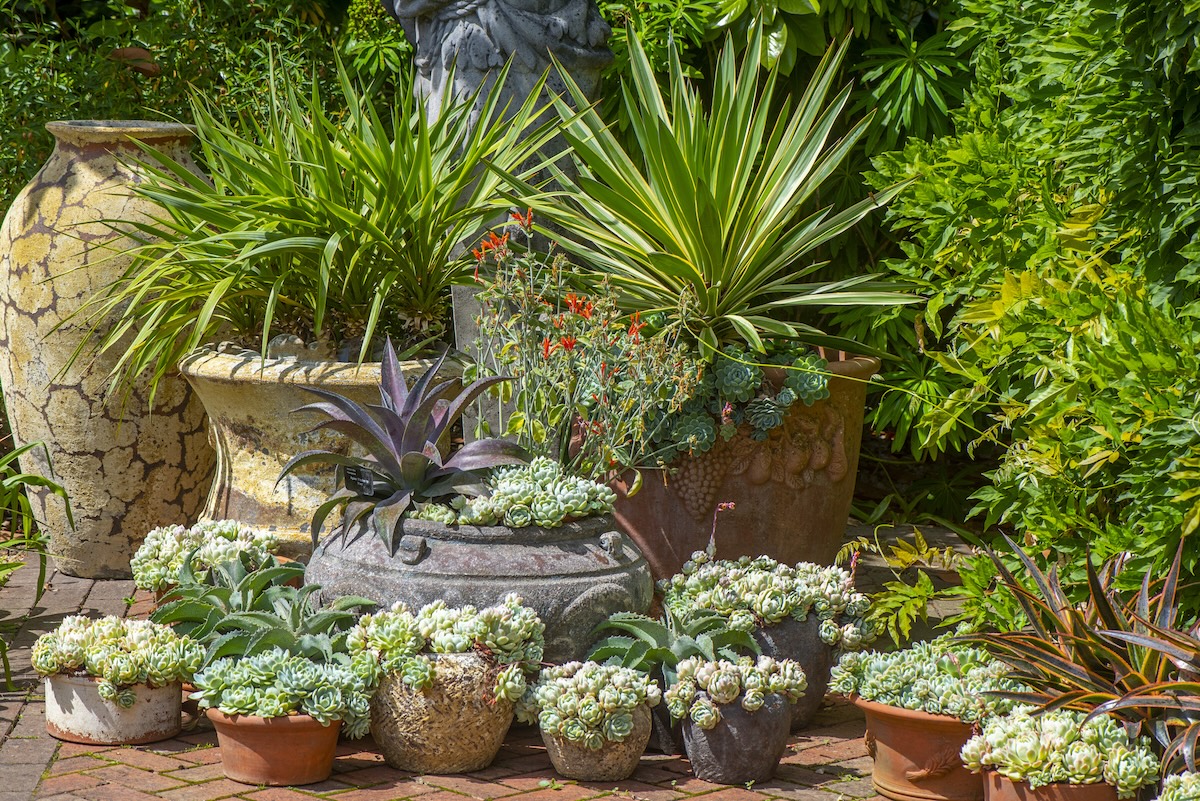

We may earn revenue from the products available on this page and participate in affiliate programs. Learn More ›
Containers filled with interesting and colorful plants give your patios and porches a welcoming and homey vibe. But remembering to water the plants regularly to keep them looking their best can be challenging.
Luckily there are a number of plants that not only do well in containers but will also persevere despite infrequent or irregular waterings. Tabar Gifford, Partnership Cultivator at High Country Gardens, suggests you “look for plants that do well in rock or crevice gardens or come from Mediterranean climates. These plants are resilient, low-maintenance, and can typically handle periods of heat and neglect without compromising their beauty.”
1. Agave (Agave spp.)
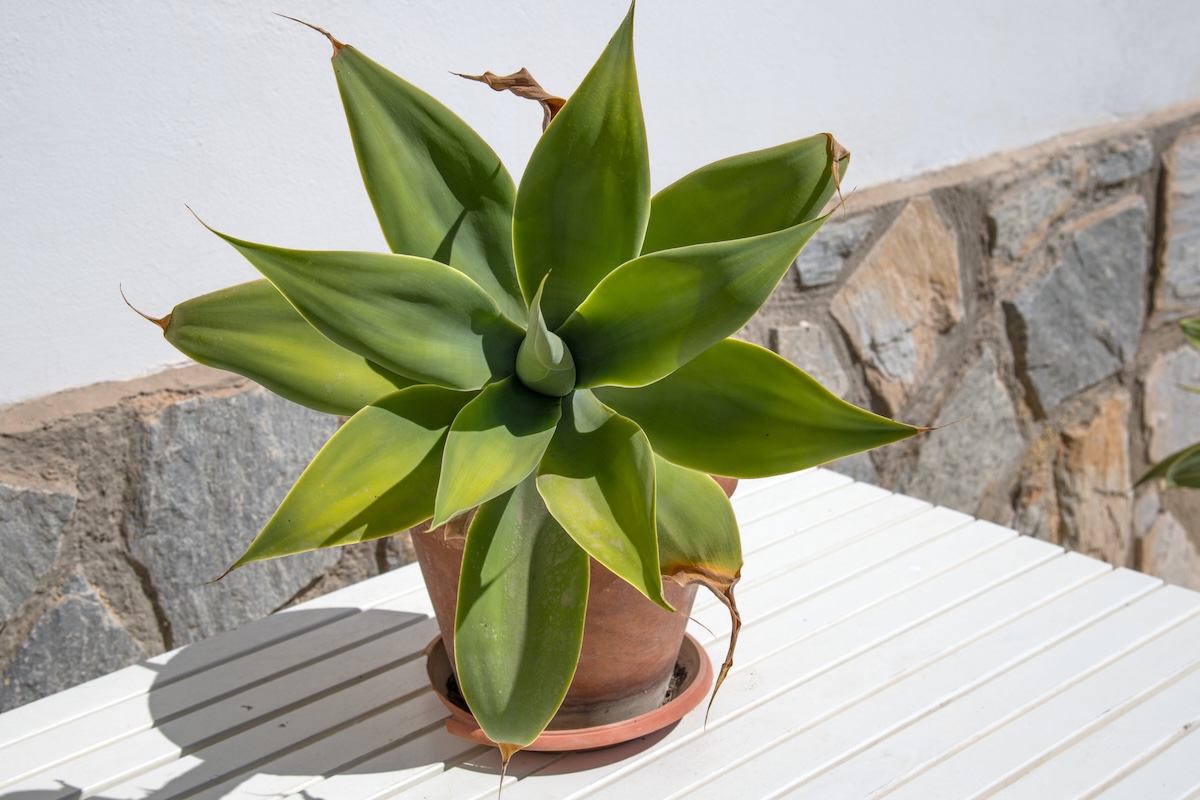
Agaves form artistic rosettes of succulent leaves ideal for drought tolerant landscaping, with their ultimate height ranging from 6 inches to 10 feet. Leaf colors include green, blue green or blue gray, often marked with white or yellow variegation.
Choose the shorter varieties to serve as the centerpoint for a succulent-filled container, but take care when handling them. Some have sharp spines, and their sap may raise a nasty rash on your skin if you come into contact with it. Water infrequently, and consider that you may need to bring agave indoors during winter if you wish to preserve them.
2. Blackfoot Daisy (Melampodium leucanthemum)
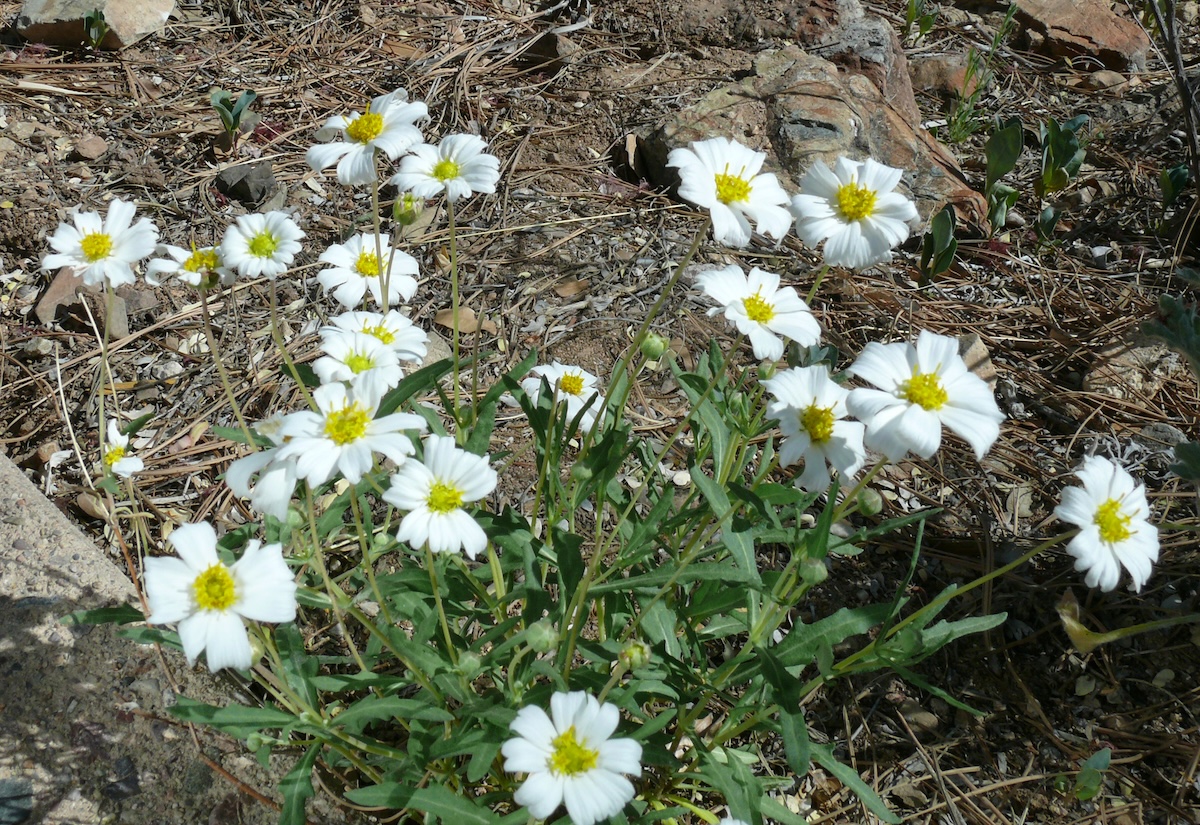
Native to the southwest, this particular daisy isn’t likely to die due to dry conditions. In fact, according to The New Sunset Western Garden Book, “in nature, blackfoot daisy grows principally in decomposed granite,” so it is accustomed to arid surroundings.
One of the prettiest full sun plants for containers and hardy in zones 4 to 11, blackfoot daisy forms a neat mound of foliage about 1 foot high and produces 1-inch fragrant white flowers with yellow centers throughout most of the spring and summer until frost. It may also bloom during winter in frost-free climates.
3. Creeping Zinnia (Zinnia angustifolia)
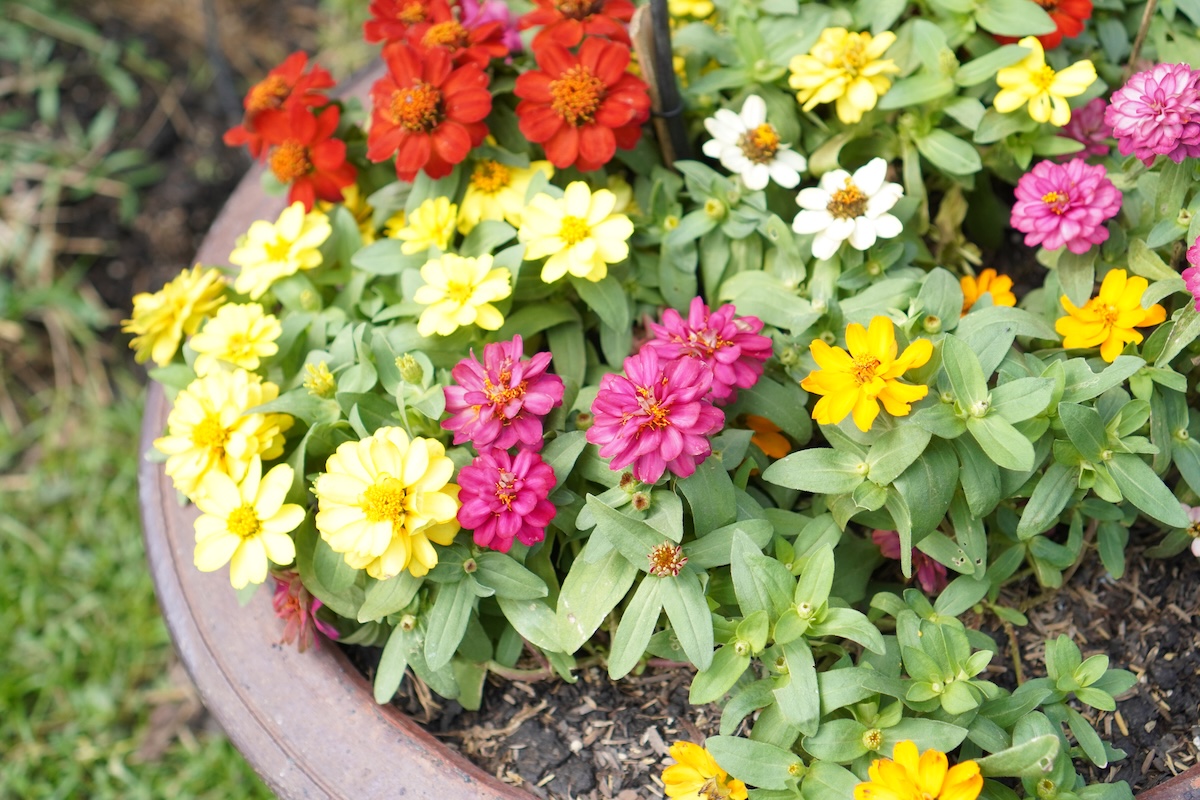
Although larger zinnias require more water, the creeping type grows to only 8 to 16 inches with single, 1-inch blooms and narrow leaves. According to North Carolina State Extension, it “has a high drought tolerance and is seldom bothered by deer.”
Its small size also makes the annual ideal for containers where it can begin to flower 6 weeks after it was planted and continue to bloom until frost if given a little organic fertilizer. Colors of the drought-resistant flowers vary according to cultivar and include white, pink, red, orange, and yellow.
4. Cushion Spurge (Euphorbia polychroma)
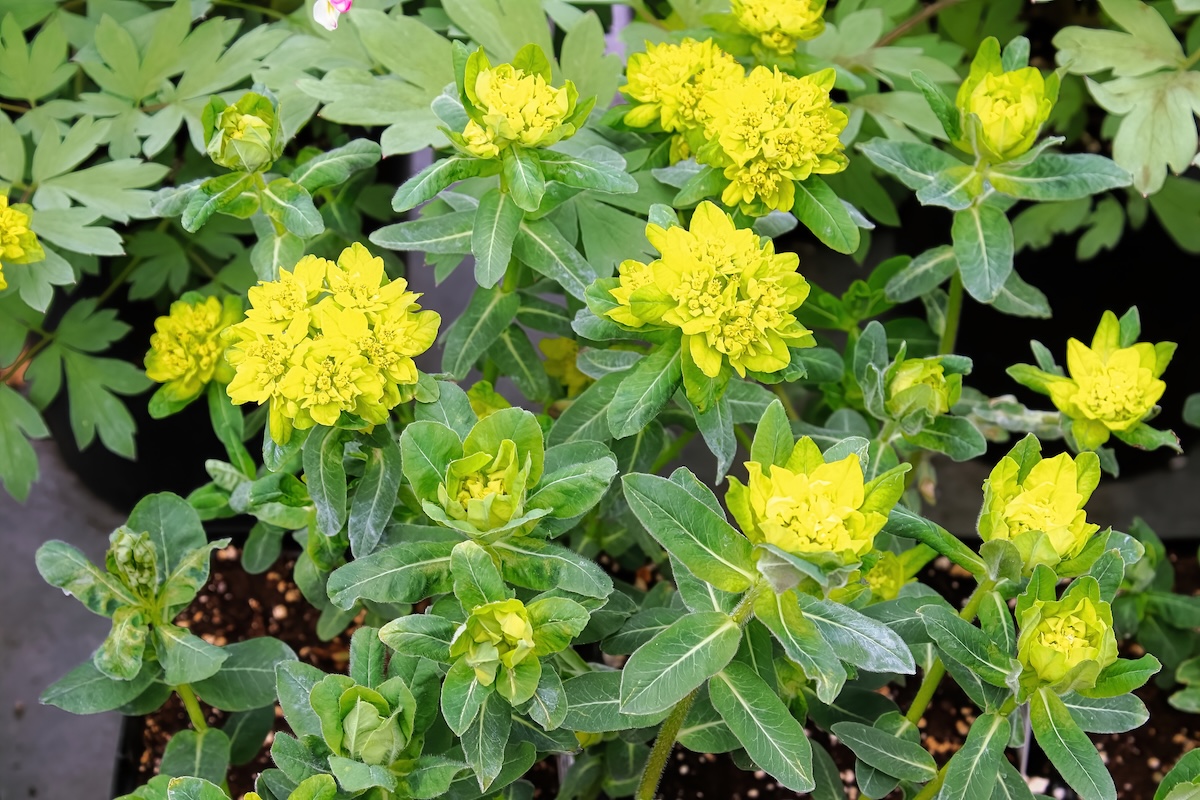
Listed among drought-tolerant perennials for USDA zones 4 to 8, cushion spurge grows to about 1½ feet tall, making it suitable for a larger container As its species name suggests, the plant is “many-colored,” making yellow flowers backed by yellow or chartreuse bracts in mid-spring through mid-summer before its foliage changes to orange or red in fall. Some cultivars such as ‘Bonfire’ also boast red-hued foliage during summer.
You’ll find a variety of other drought-tolerant euphorbias as well including container trees such as the pencilbush (Euphorbia tirucalli). Keep in mind that the white sap most euphorbia plants produce is a skin irritant, and some species are toxic to pets and people.
5. Hen and Chicks (Sempervivum spp.)
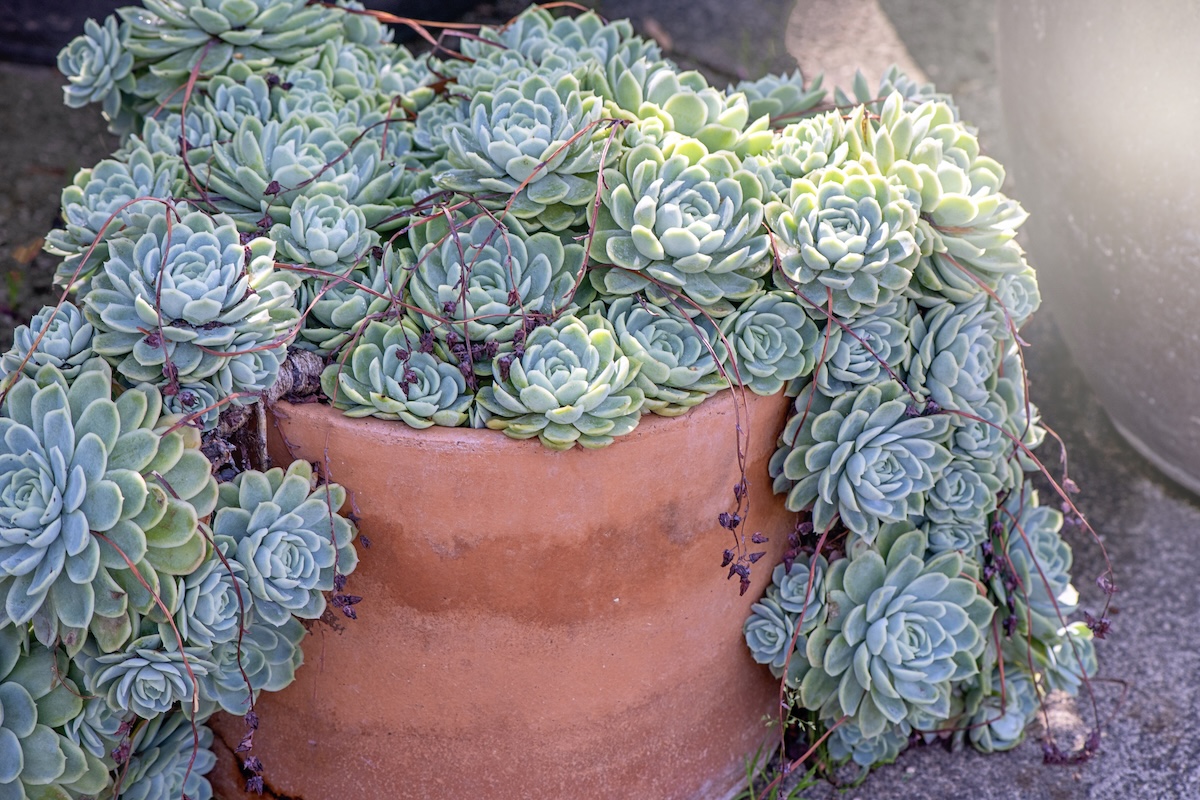
You may cackle over the cuteness of hen and chicks, a succulent that consists of a large central rosette of leaves (the hen) surrounded by smaller offset rosettes (the chicks). Also known as houseleek, sempervivium was once grown on the roofs of European homes, due to the belief that it protected the homes from lightning.
Hardy in zones 3 to 8, it requires little moisture and can make small star-shaped flowers in a variety of colors. However, the setting of seeds will cause the rosette producing them to die, so deadhead those blooms to preserve your flock of outdoor plants in pots.
6. Iceplant (Delosperma spp.)
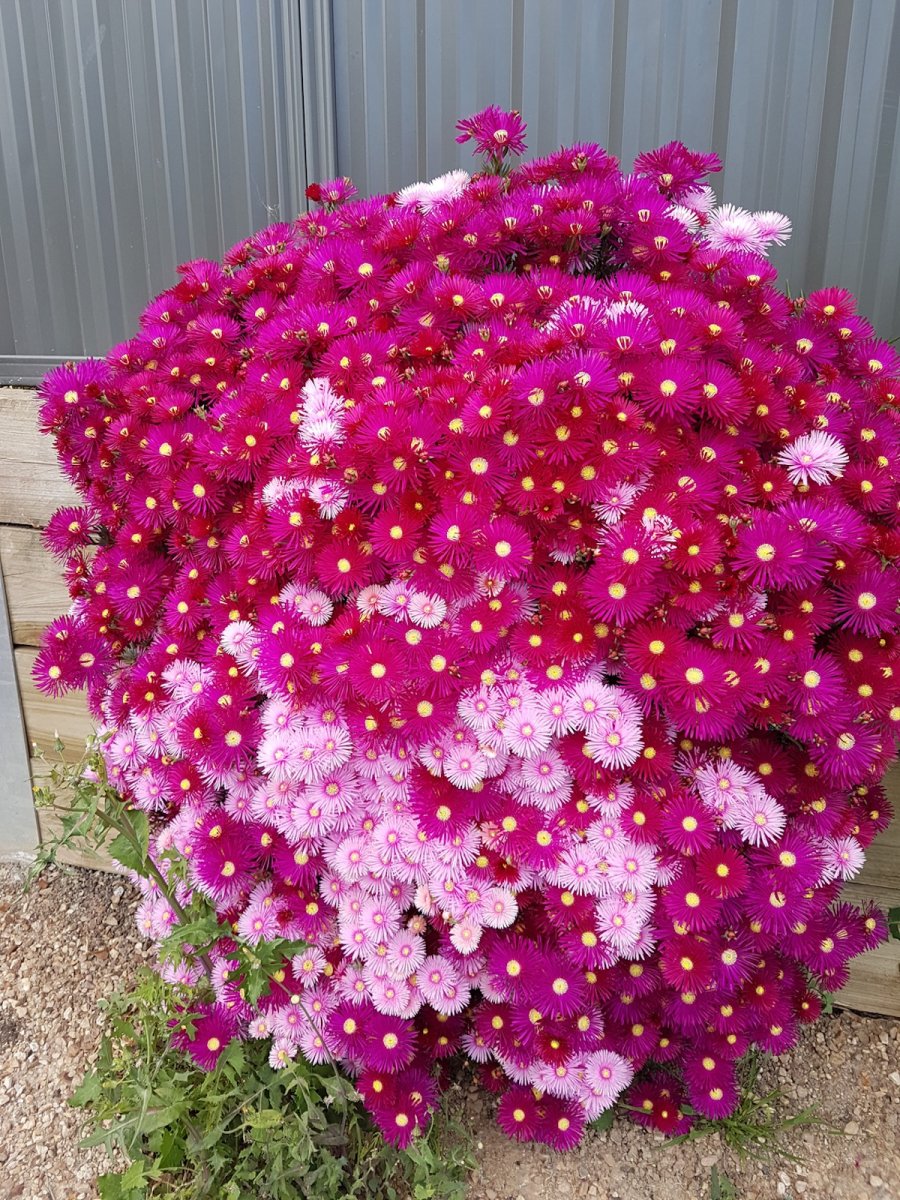
Despite its “cold” common name, which refers to its glistening succulent foliage, iceplant is described by North Carolina State Extension as “very drought and heat-tolerant.” Gifford agrees, saying “Its fleshy leaves store water, so it shrugs off dry spells, and the daisy-like flowers in a range of vibrant hues bloom from late spring through fall, spilling over container edges in a burst of color.
“For gardeners seeking a low-maintenance plant that won’t collapse if the watering can gets forgotten or you’re off on summer adventures, Delosperma delivers both beauty and resilience,” she adds.
7. Lantana (Lantana spp.)
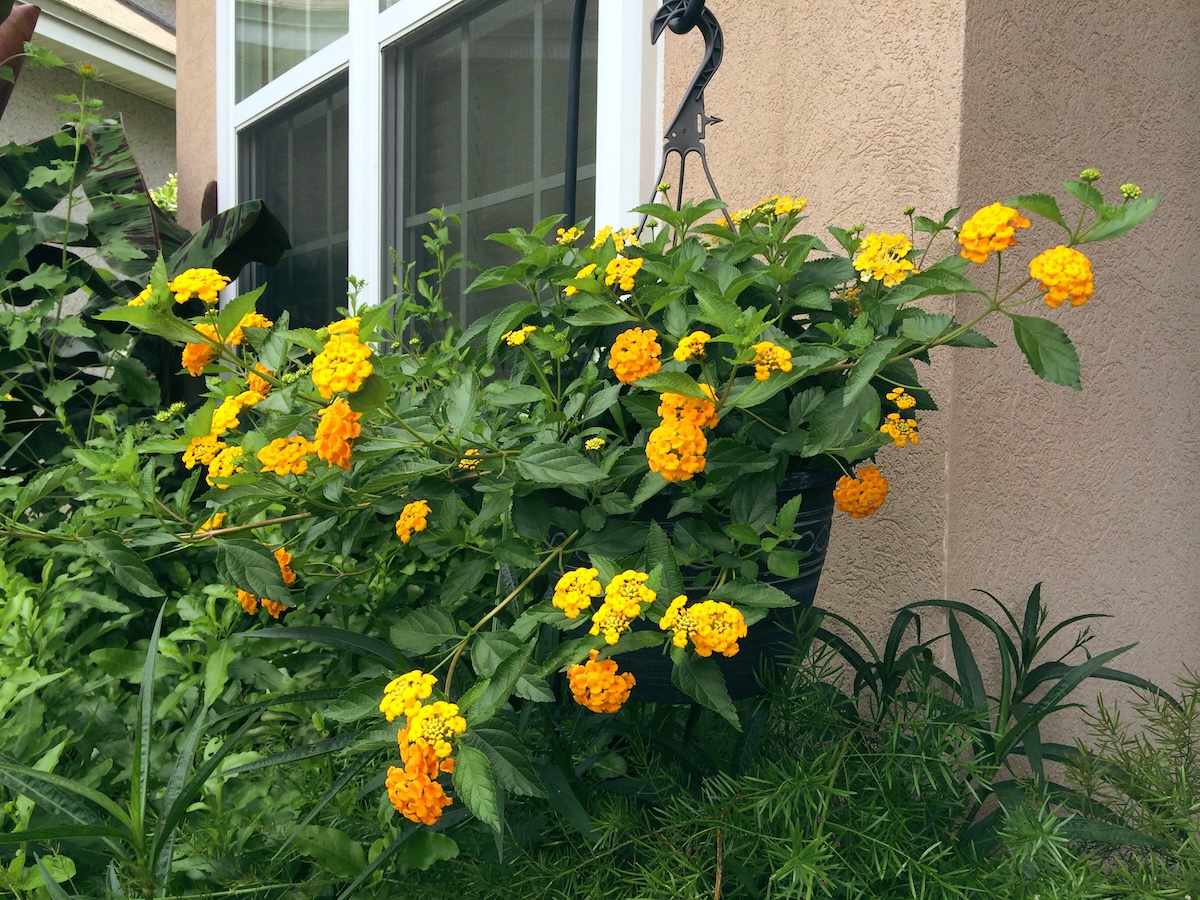
Native to North America, lantana is a tough plant sporting clusters of delicate flowers in a number of colors. While some varieties are upright, others are trailing and both would be lovely in a container if kept trimmed up. All types are extremely drought tolerant, after a couple of initial dousings to get them started after transplanting.
Among the flowers for planters in full sun, lantanas can be perennial weeds in frost-free zones, but elsewhere they make long-blooming annual container plants that can thrive with little water. Keep in mind that the crushed leaves have a somewhat peculiar scent and the unripe berries are toxic, so they should be kept trimmed off.
8. Moss Rose (Portulaca grandiflora)
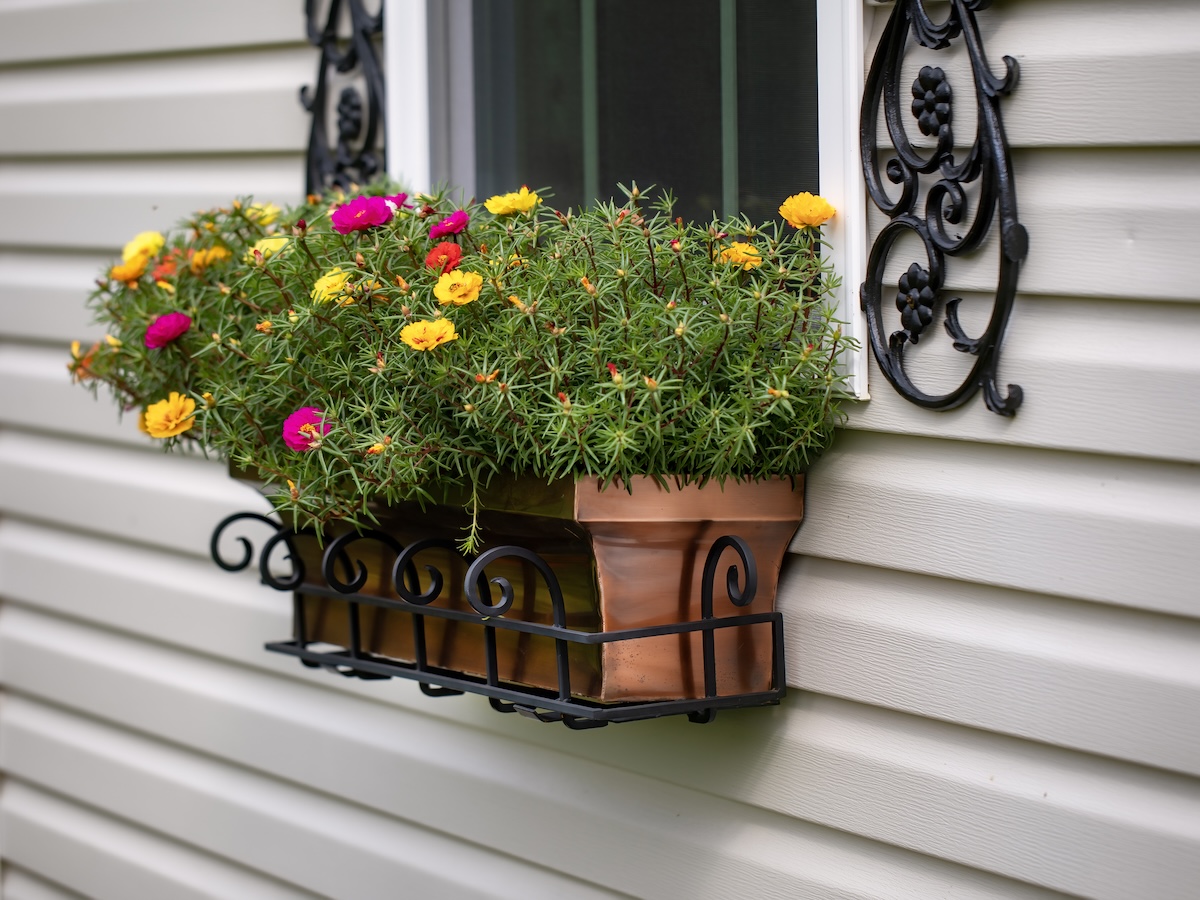
Among full sun plants for pots, portulaca grows only to 6 or 8 inches with mossy-looking succulent foliage and 1 to 3-inch single or double brightly colored flowers that resemble ruffled miniature roses. Those blooms typically close during the afternoon and on cloudy days, but some cultivars, such as ‘Afternoon Delight,’ were bred to stay open longer.
According to North Carolina State Extension, “[Moss rose] has a high drought and heat tolerance and needs to be planted in well-drained sandy or rocky soils in full sun.”
9. Prairie Verbena (Globularia bipinnatifida)
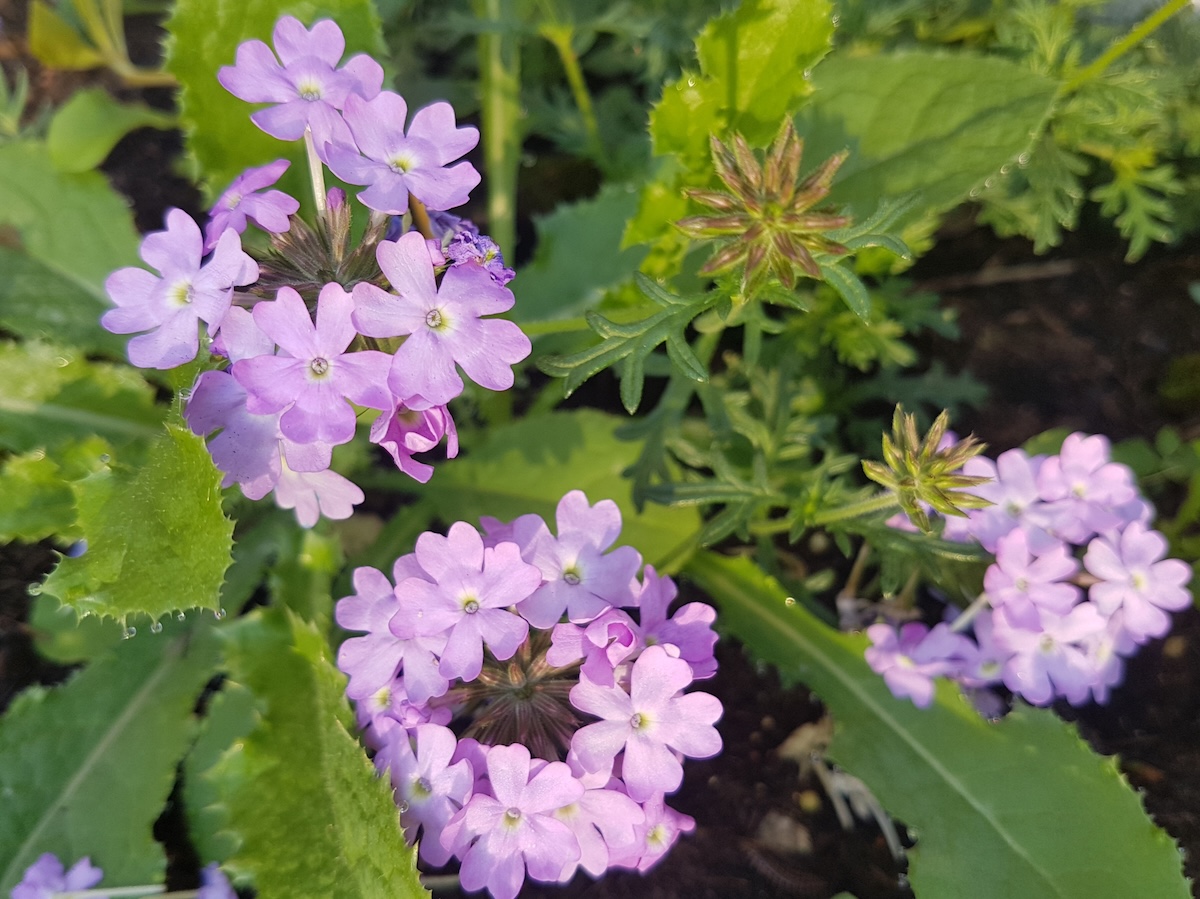
Although The New Sunset Western Garden Book asserts that the typical verbena hybrid plants for containers “all need regular water,” it notes that the wild prairie verbena requires only “little water.” Potted plants in full sun will grow from 3 to 16 inches tall with ferny foliage and clusters of pink or lavender blooms. Those are produced most heavily from mid-spring to early summer in USDA zones 5 to 8 but continue to appear on and off into autumn.
10. Spanish Lavender (Lavandula stoechas)

Considered the most drought tolerant of lavenders, the Spanish type typically grows from 1½ to 3 feet in height, depending on the cultivar. It produces spikes of flowers sometimes compared to elongated pineapples that vary from reddish lavender to dark purple.
Hardy in USDA zones 7 through 10, Spanish lavender can bloom off and on for much of the spring and summer when faded flowers are clipped off, making it suitable as a supplier of fragrant flowers in pots outside.
11. Stonecrop (Sedum spp.)
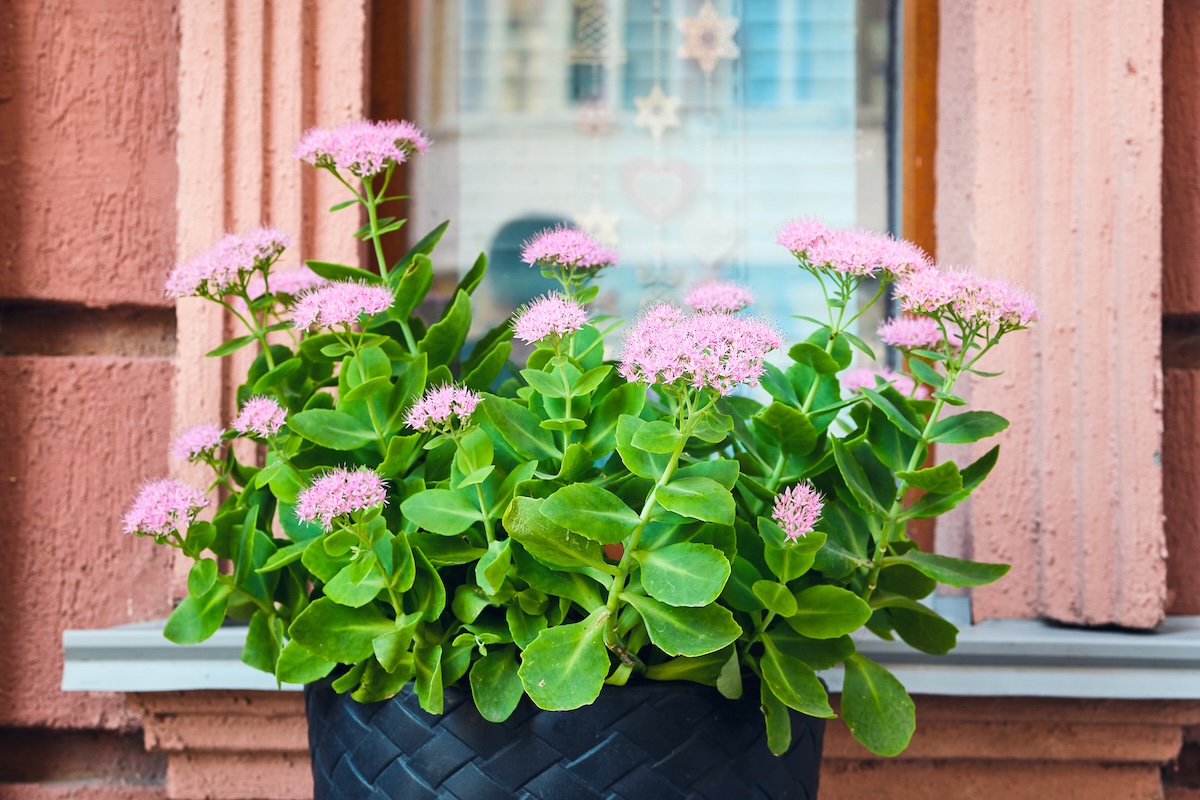
The New Sunset Western Garden Book describes this genus as “mostly groundcover scale succulents that grow nicely in the spaces between rocks (thus ‘stonecrop’)” and “are tough low-maintenance plants.” They make nice additions to a container containing a variety of succulents; choose one of the low-growing varieties, as some sedums can get as tall as 5 feet.
Water sedum generously when you first transplant in, and then water only when the first few inches of soil are dry.
